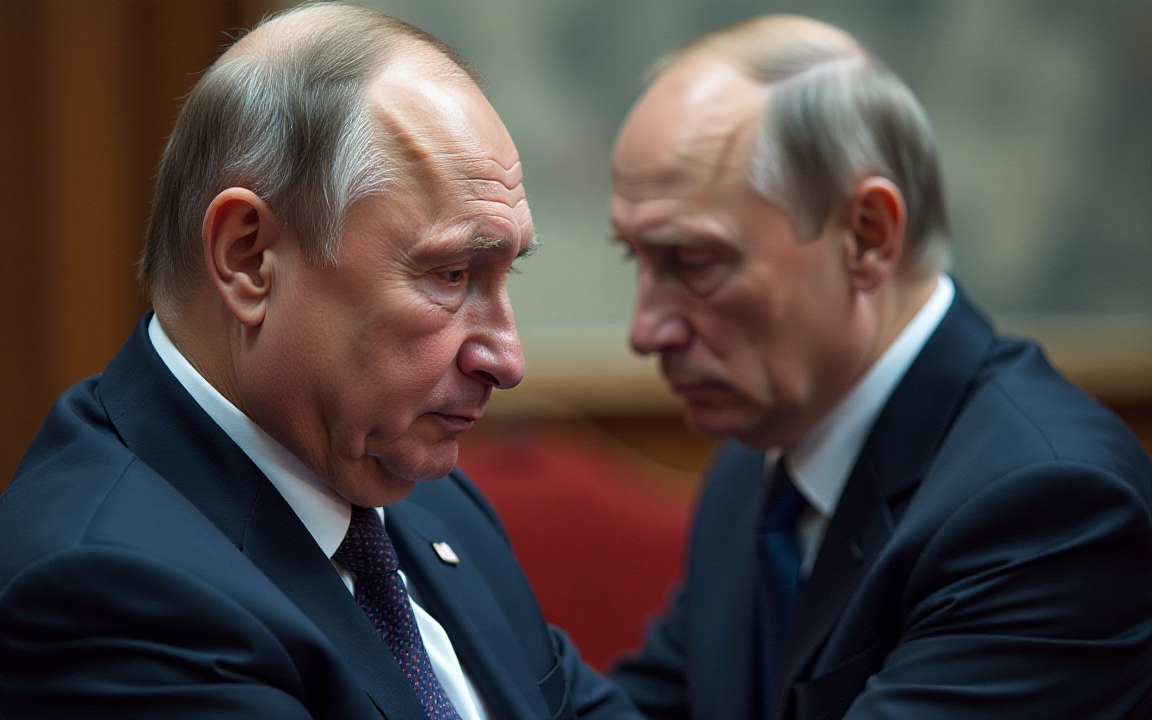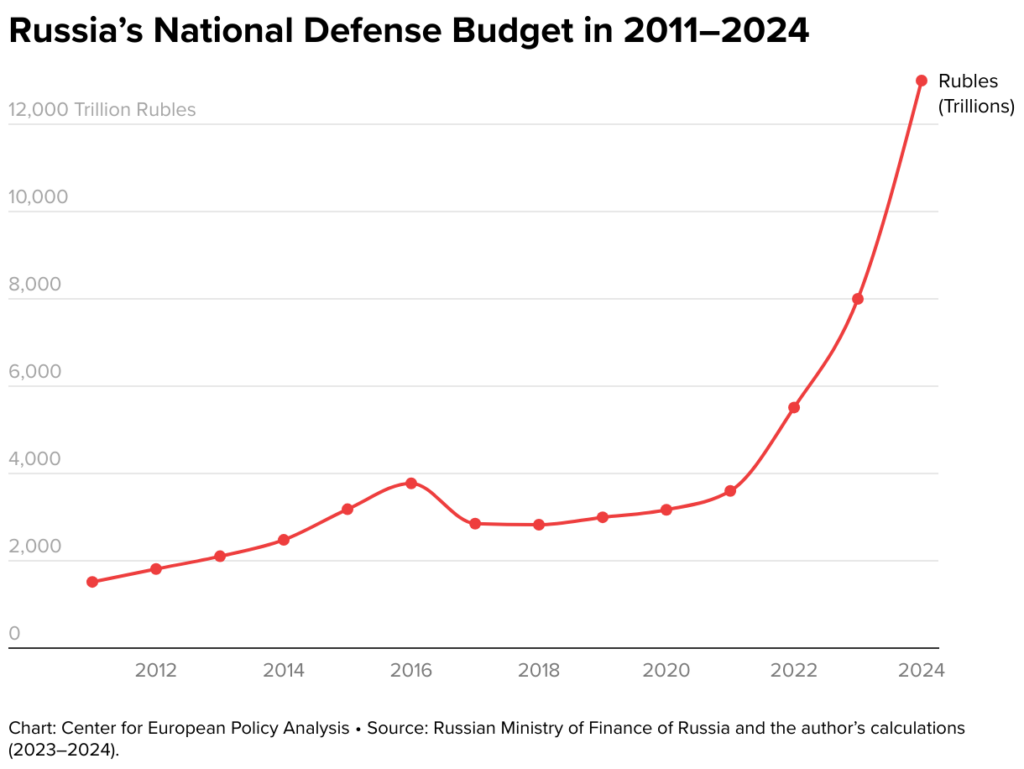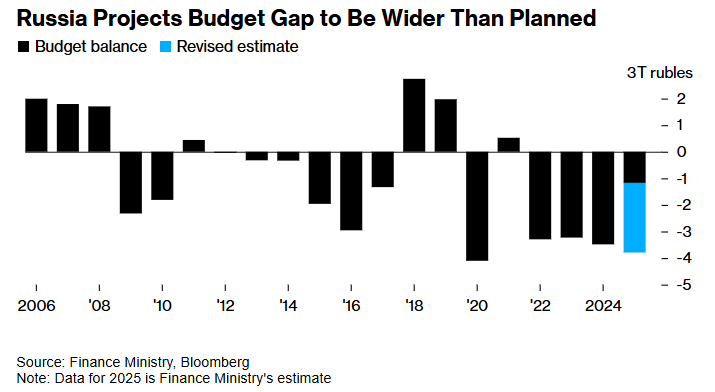
Russia’s economy has not collapsed under pressure. At least not yet. GDP still grows. Wages have risen.
Western sanctions failed to deliver the knockout blow many expected. But appearances are deceptive.
The structure that holds this war economy together is increasingly brittle, and signs are mounting that President Vladimir Putin is approaching a limit he cannot ignore.
Seven key developments over the past weeks have revealed a system in motion, but under strain.
Putin’s wartime model has kept Russia functioning through firepower, money, and narrative control.
But it’s now approaching the point where he may be forced to choose between financing the war and preserving internal calm.
That choice may define the next phase of this war more than any battlefield victory.
A war economy built on transfers, not productivity
The illusion of resilience is supported by massive spending. Defense now accounts for an estimated 40% of the state budget.

Other studies have shown that the country’s military expenditures were close to 7% of its GDP, a 40% increase year-over-year.
According to reports, Russian soldiers are paid bonuses worth up to 1.5 million rubles, and their families receive “coffin money” payouts of 12 to 15 million rubles if they are killed.
These transfers have fueled local booms in poor regions like Tuva, Buryatia, and Dagestan, where bank deposits rose by 151% and 81%, respectively.
Factories in the defense sector run 24 hours a day, and many former civilian firms were forced to retool into military production.
Bread factories now assemble drones. Shipyards make stoves. Some benefit from this reindustrialization.
Others, like Severstal PJSC, Russia’s steel giant, are posting negative cash flows of 33 billion rubles, despite being profitable a year earlier.
This system works only because the Kremlin is aggressively propping it up. But the cost is steep.
Oil and gas revenues are down, partly due to falling global prices and a stronger ruble, while inflation remains above 10%.
The budget deficit has tripled, and high interest rates (21%) imposed to stabilize inflation are choking private sector investment.

A banking system that is cracking
This model also hinges on financial stability, which is now being tested.
In late May, the Kremlin-linked Center for Macroeconomic Analysis and Short-Term Forecasting (CMASF) warned of a “systemic banking crisis” in the making.
It outlined three triggers: a depositor run, bad loans exceeding 10% of assets, or recapitalization needs greater than 2% of GDP. None have happened yet, but all are closer than before.
Liquidity is thinning. The money supply-to-monetary base ratio has surged, suggesting that banks are overleveraged.
Volatility on the MOEX stock index has spiked, tracking investor uncertainty.
Big corporates, including Gazprom, Norilsk Nickel, and Severstal, have canceled dividend payouts due to falling profits and rising borrowing costs.
Rosstat reported a 6.9% decline in corporate earnings in 2024, or 15% when adjusted for inflation.
The Bank of Russia’s 21% policy rate, originally meant to contain inflation, is now stifling lending, delaying projects, and choking growth outside the war economy.
Diplomacy remains frozen and that’s part of the strategy
Parallel to the economic tension is diplomatic paralysis. Two rounds of peace talks between Russia and Ukraine in Istanbul ended with almost no progress.
Russia’s latest demands were near-total: Ukraine must withdraw from all occupied regions, renounce NATO, limit its military, lift martial law, and hold elections within 100 days.
All sanctions must be dropped, and no reparations should be demanded.
Ukraine refused, calling the terms political fantasy. Western officials privately agree.
Even US President Donald Trump, who staked his second-term foreign policy on ending the war, called Putin “absolutely MAD” after Russia’s recent strikes on Ukrainian cities.
Senator Richard Blumenthal accused Russia of “mocking peace efforts” and warned the Kremlin was “playing America for fools.”
Yet Russia’s refusal to compromise is calculated. According to Dmitry Medvedev, now a senior security official, Moscow’s aim is not peace. It’s victory.
Diplomacy has become another front in the war, designed to exhaust Ukraine’s allies, pressure US mediators, and stall just long enough for battlefield progress.
Russia knows it’s playing with fire
Beneath the silence of the Russian public lies intense state monitoring. The Kremlin’s presidential administration remains the single largest consumer of polling data in the country.
Prime Minister Mishustin’s “coordination center” tracks discontent in real time, fusing AI, social media data, and regional reports into “satisfaction maps” updated daily.
This is not paranoia. It is survival instinct. Putin witnessed two regimes collapse around him and knows that even authoritarian systems can fall quickly if the public turns.
He is aware that the illusion of stability must be maintained, not just through force, but through income and services.
This is why he has refused further mobilizations, despite military pressure. It’s also why the government continued spending on mortgage subsidies and consumer protection programs until recently.
These programs are now being scaled back. Most subsidies are gone. Growth is slowing. Wages for new hires have stalled. The internal trade-off between war abroad and stability at home is becoming harder to afford.
What breaks first: the war machine or the social contract?
The story of Russia’s war economy is not just one of survival. It’s one of unsustainable compression. Everything has been tightened to its maximum setting. Finances, politics, military.
Real incomes are still higher than before the war, but the gains are slowing. Inflation remains high, and interest rates are suffocating real investment.
The Kremlin cannot keep writing large checks to soldiers’ families and regional governments forever.
On the battlefield, Ukraine is far from defeated. Its long-range drone attacks on strategic Russian bombers in Siberia and the Arctic show it has capabilities that can strike beyond the front lines.
These small victories reveal a resilience and technical depth that complicates Russia’s path to escalation.
Putin is not facing collapse. But he is facing choices. Keep spending on the war and risk economic collapse. Cut spending and risk public unrest. Attempt another mobilization and risk his grip on power.
Russia is prepared to fight for as long as it takes. Any real hope for peace now rests on external powers.
The post Putin’s war economy gamble: how long can Russia sustain the cost? appeared first on Invezz

